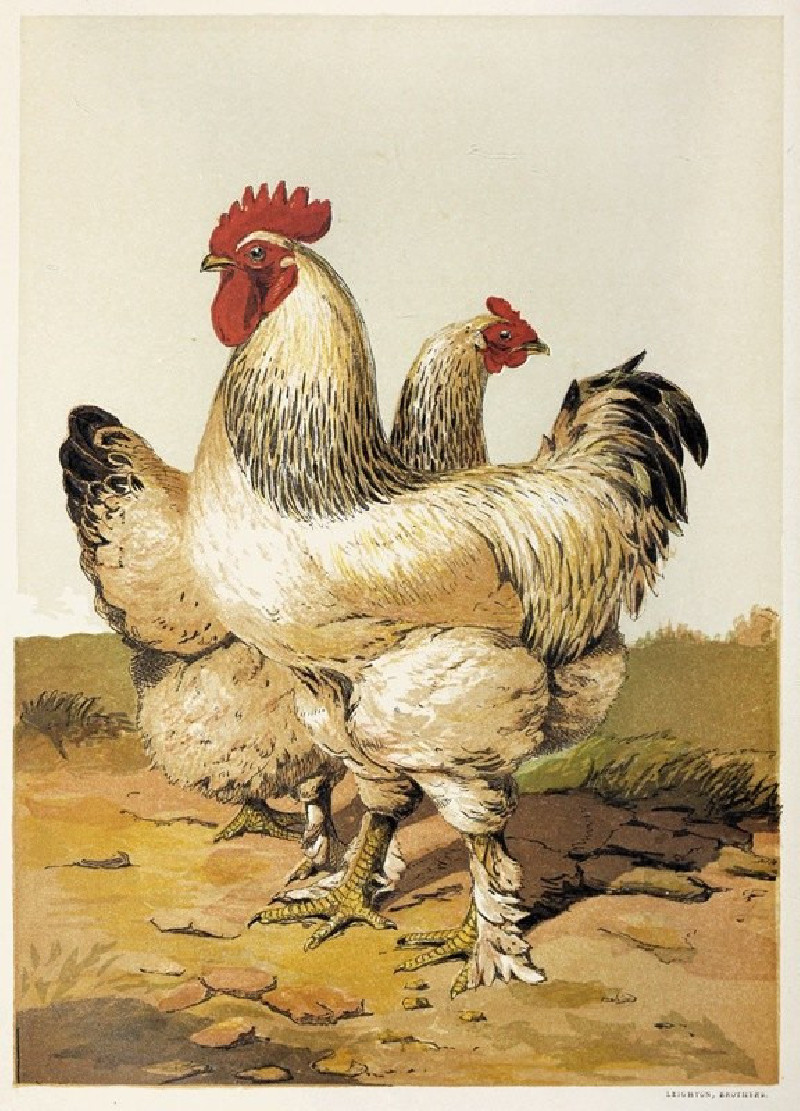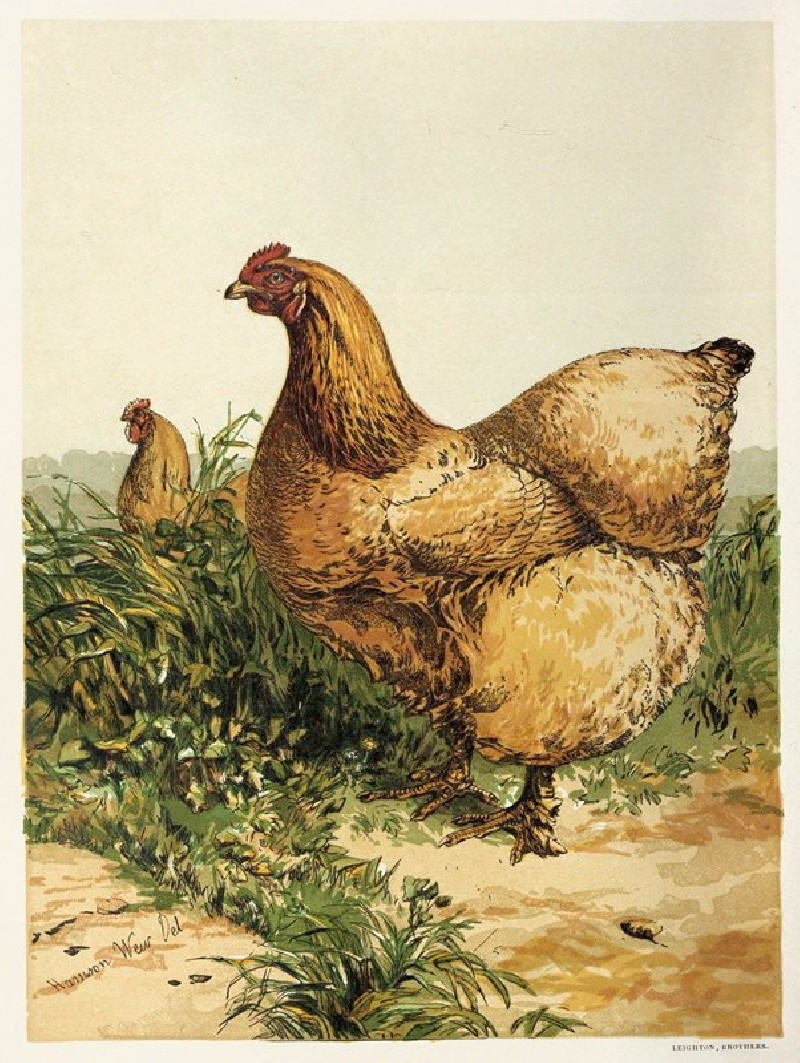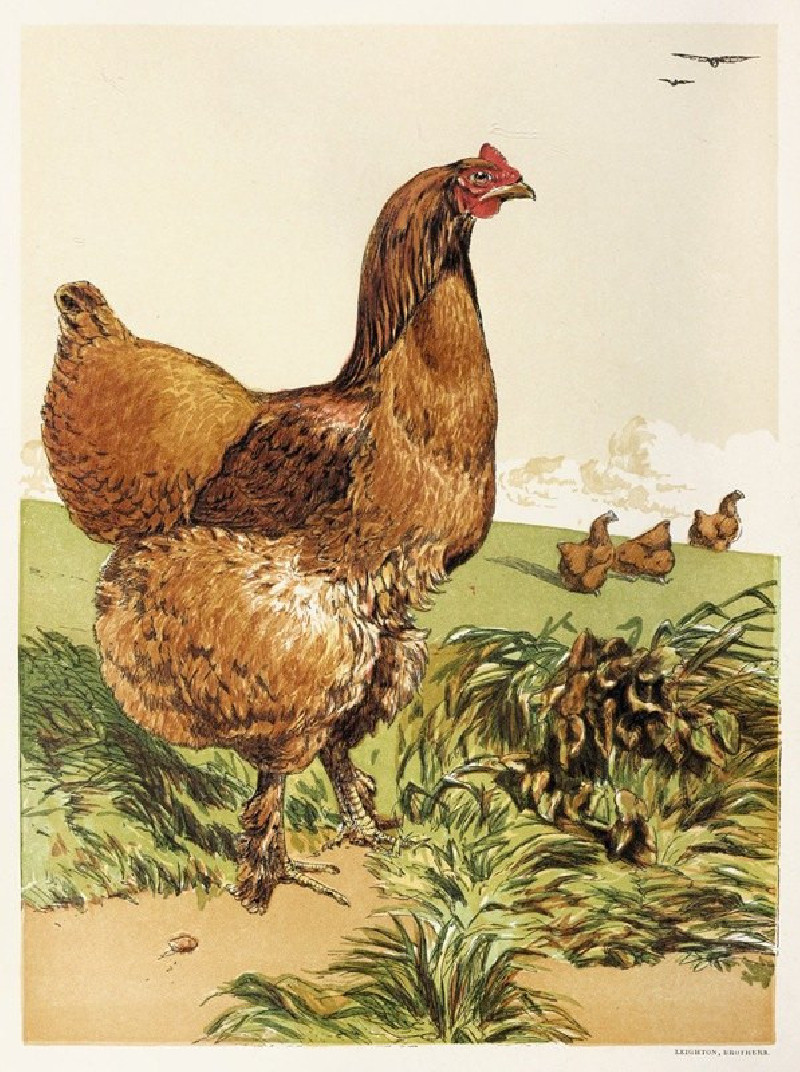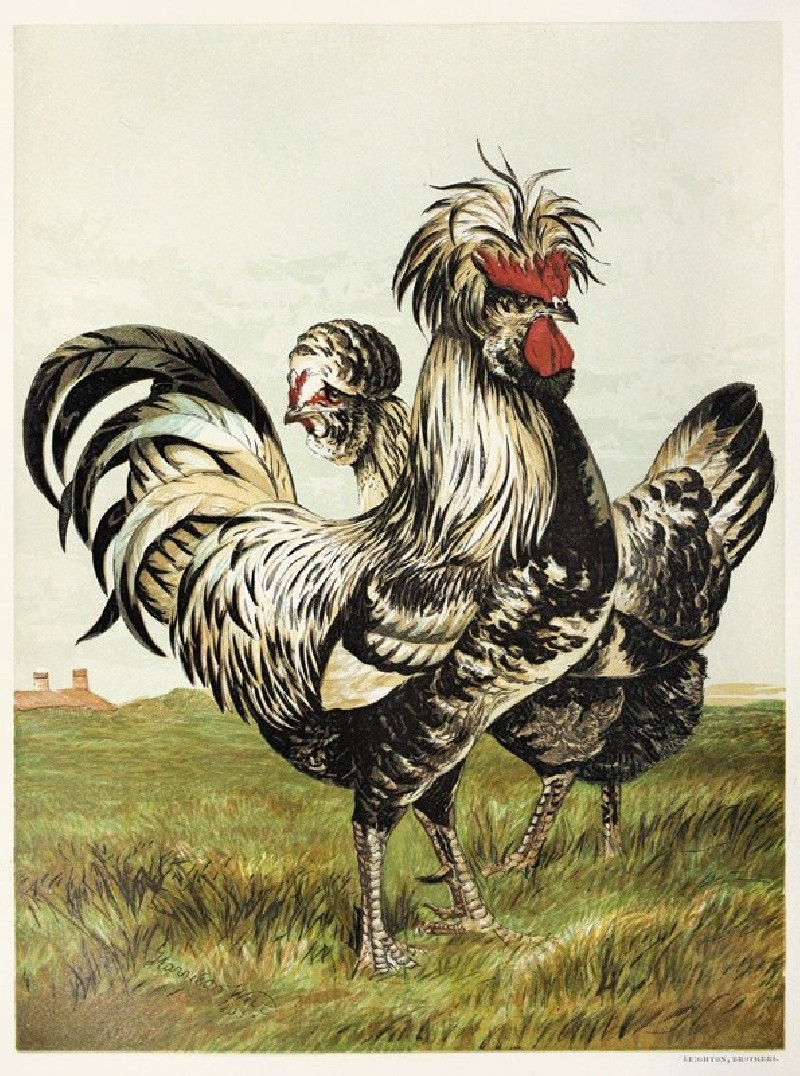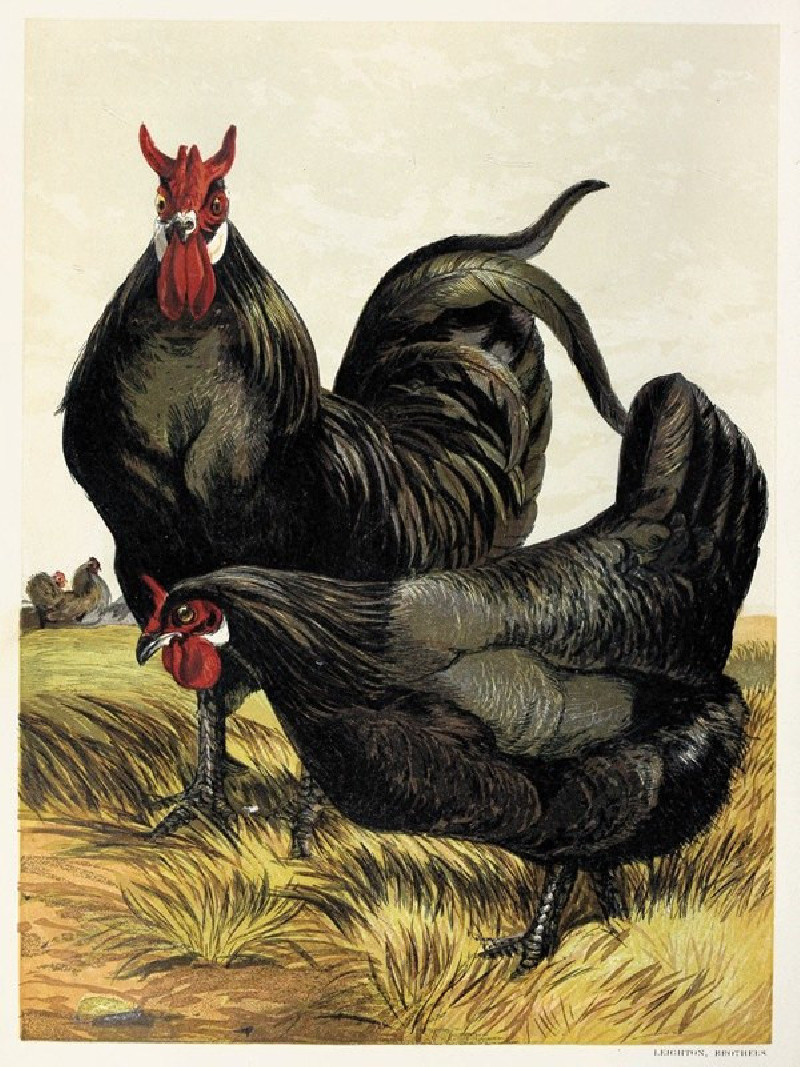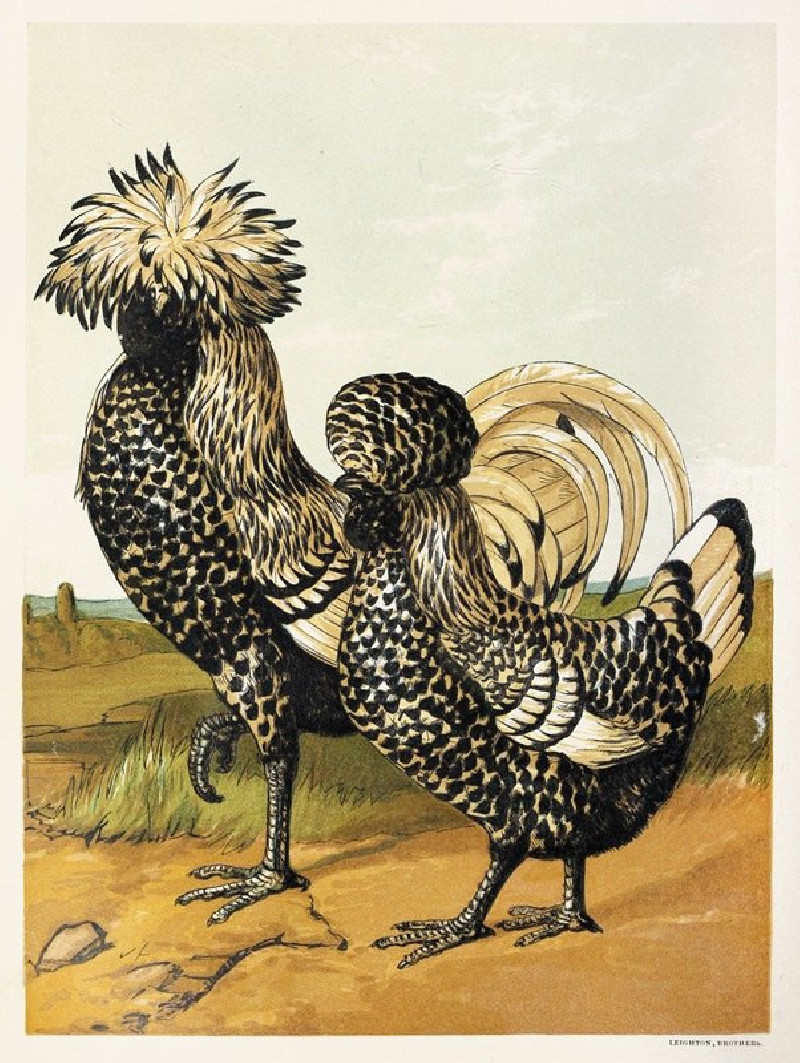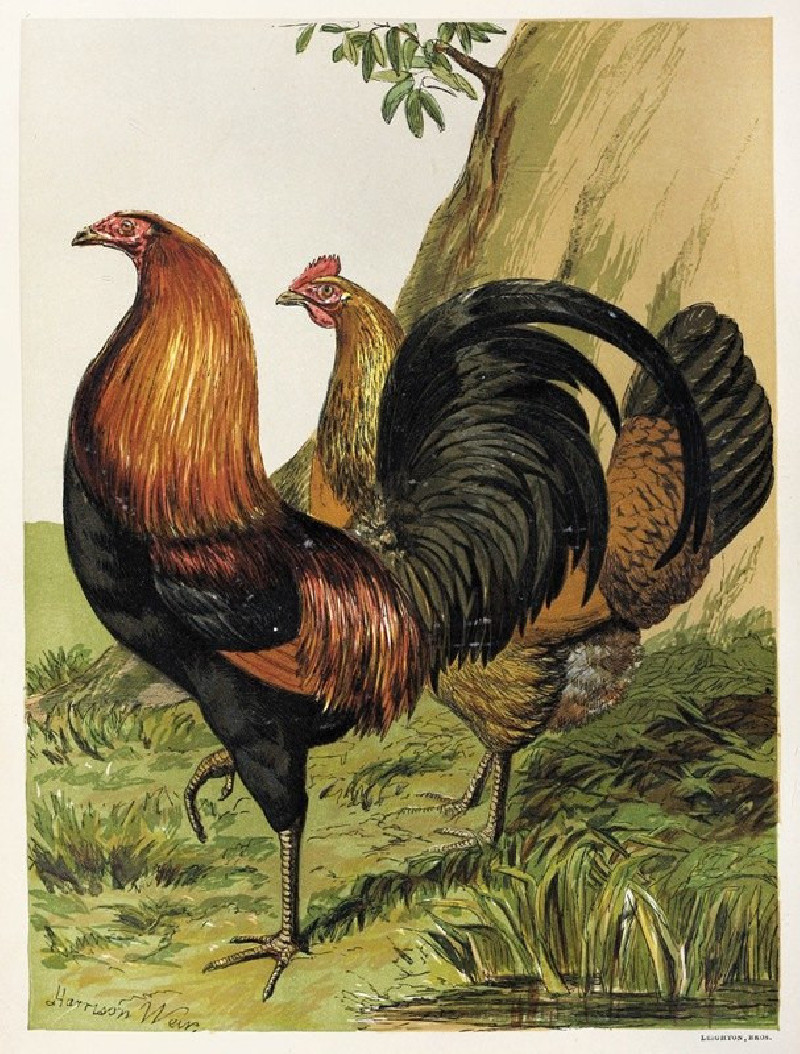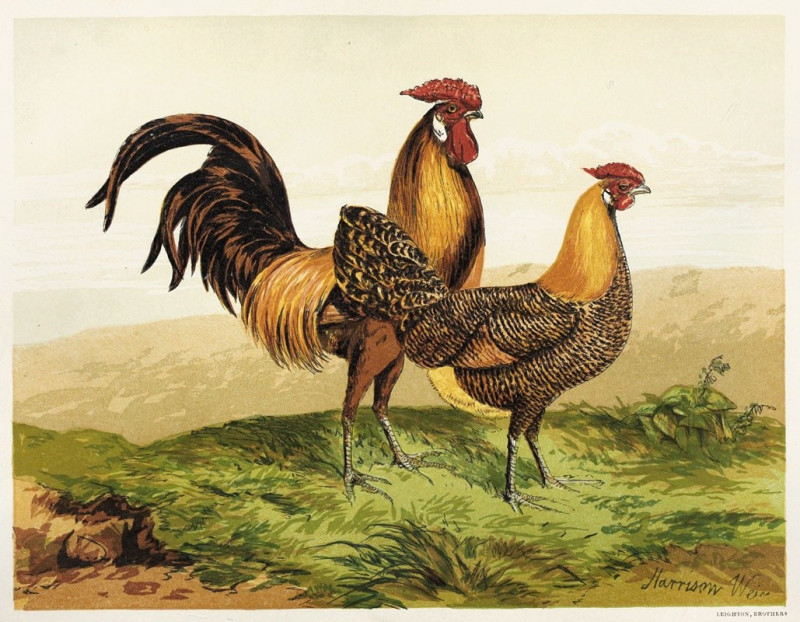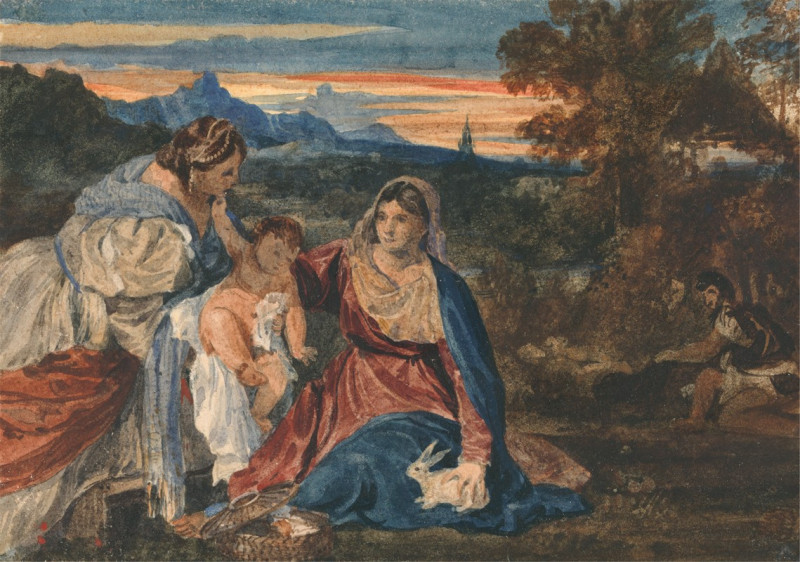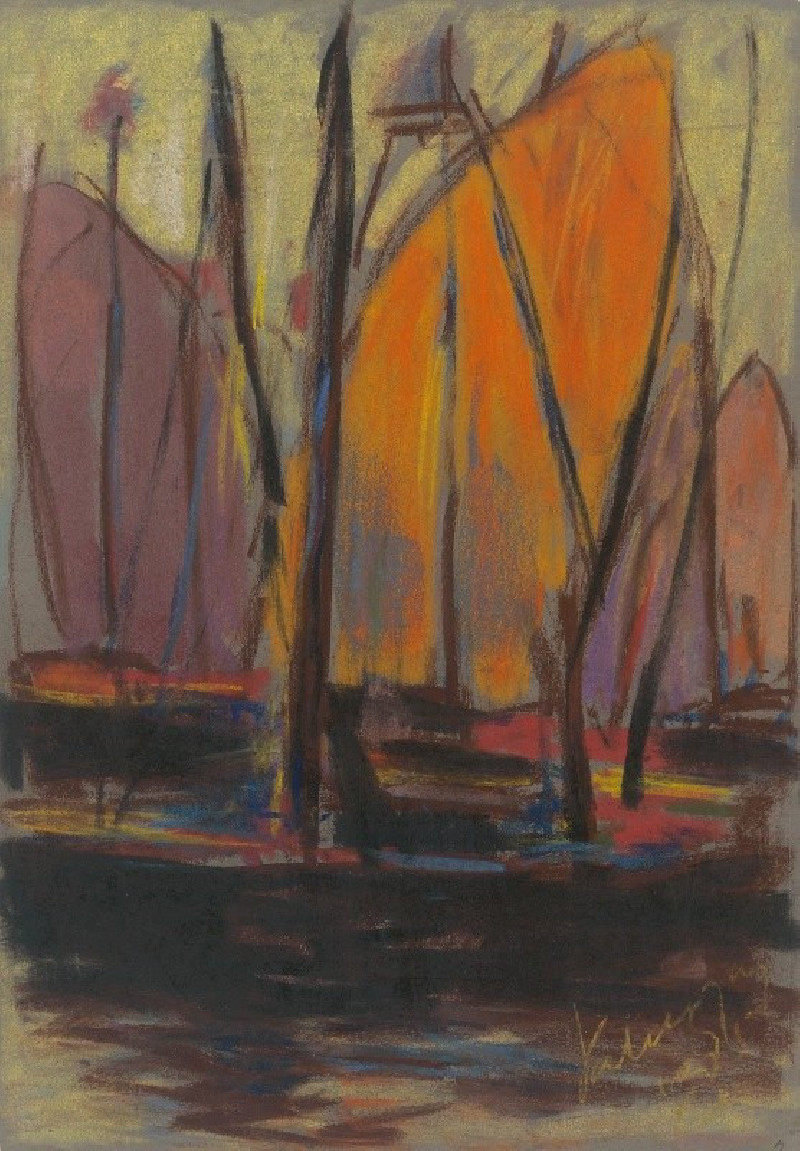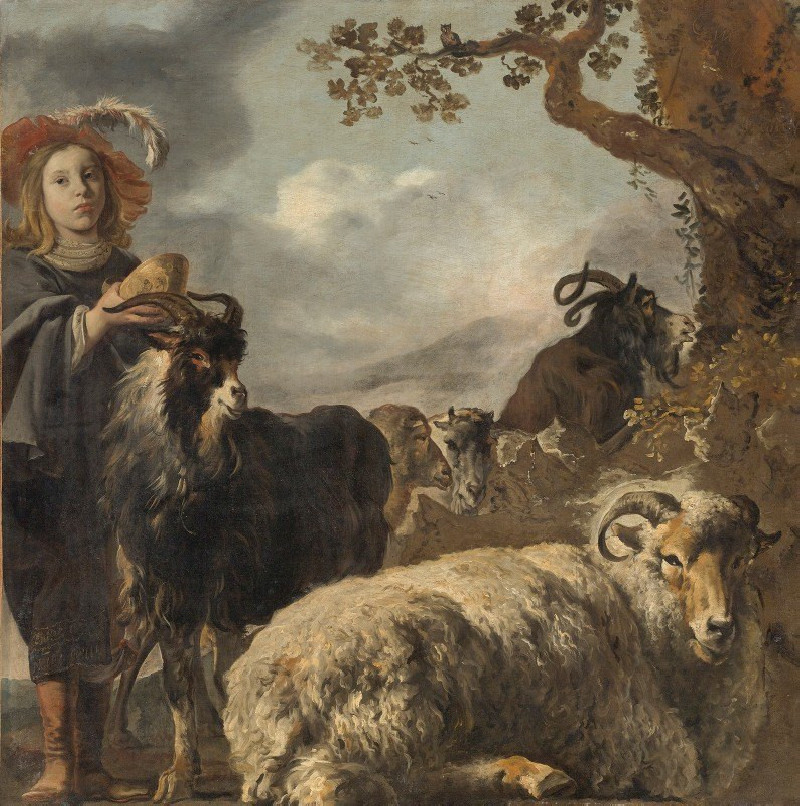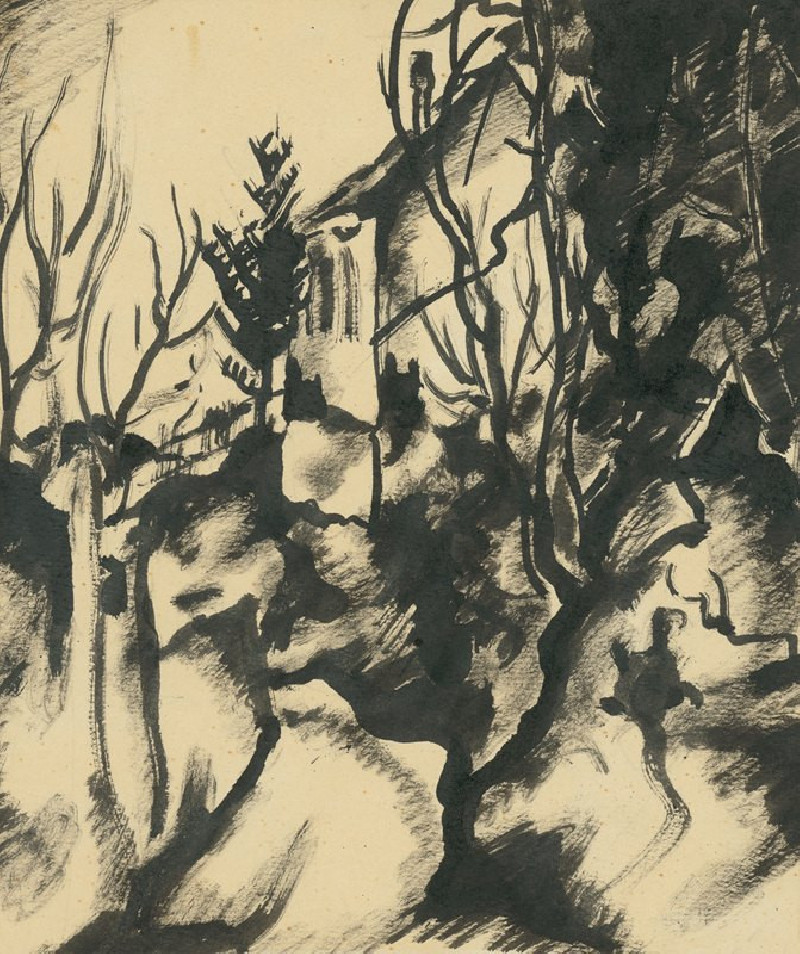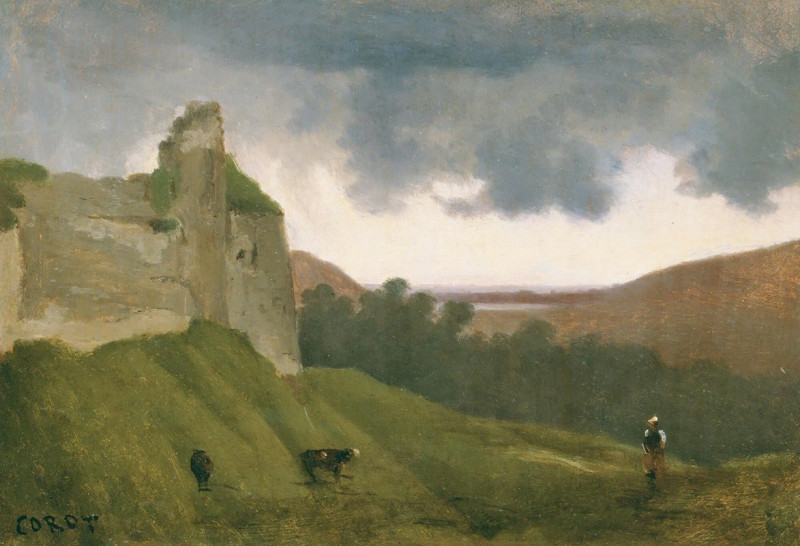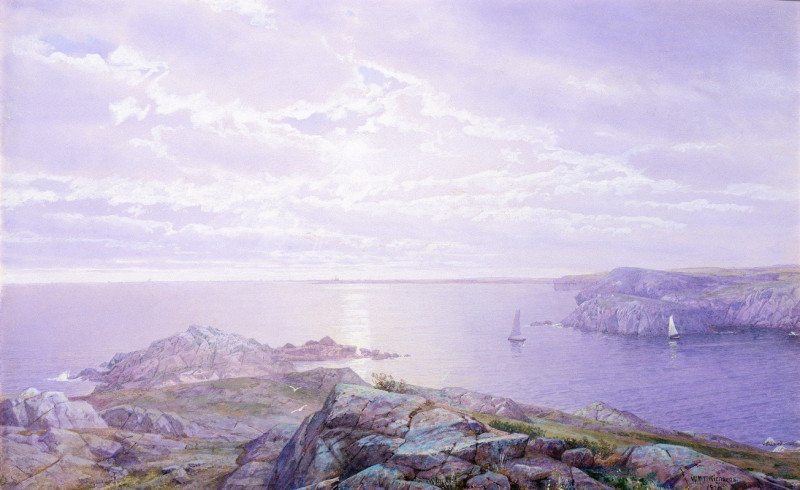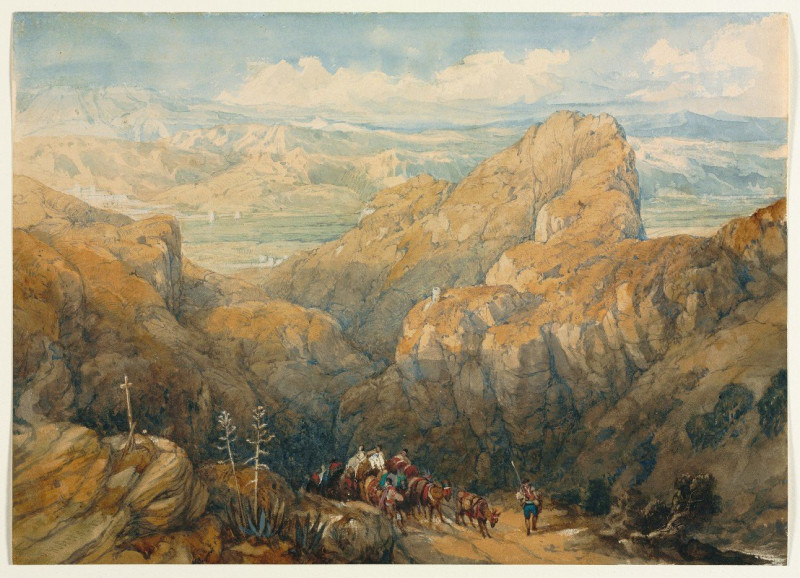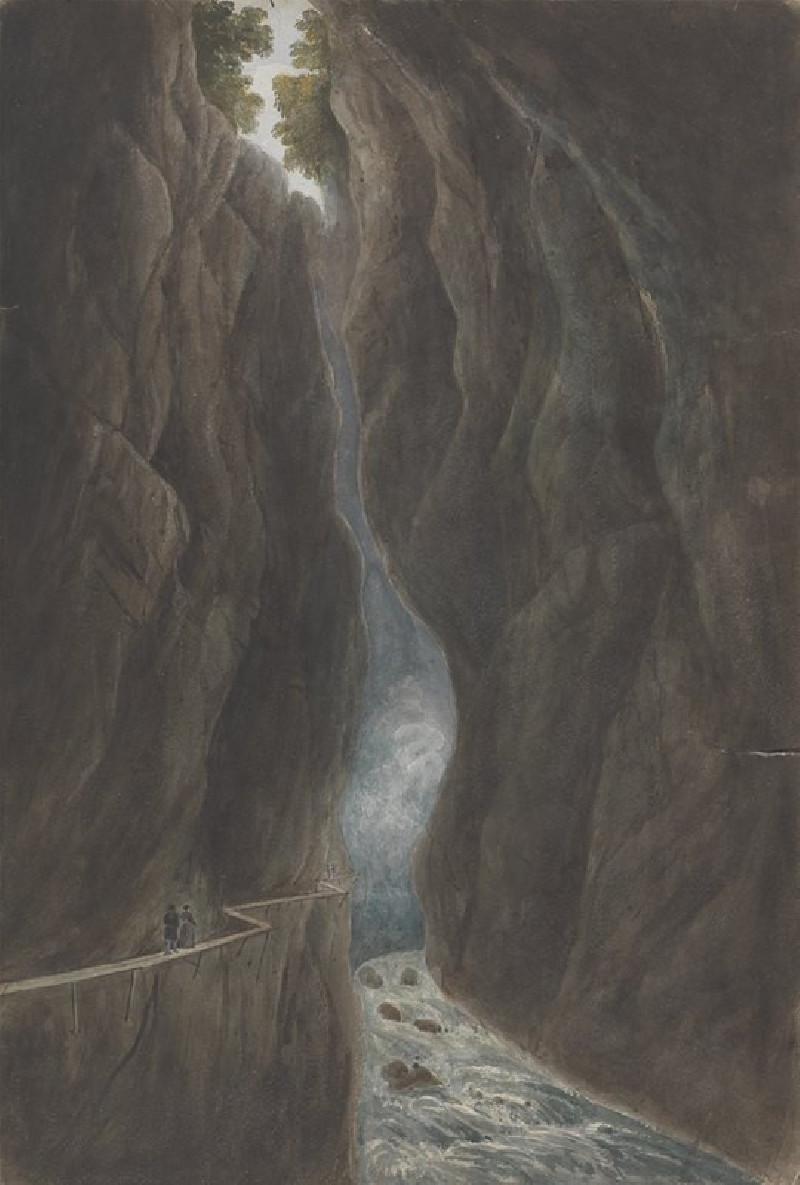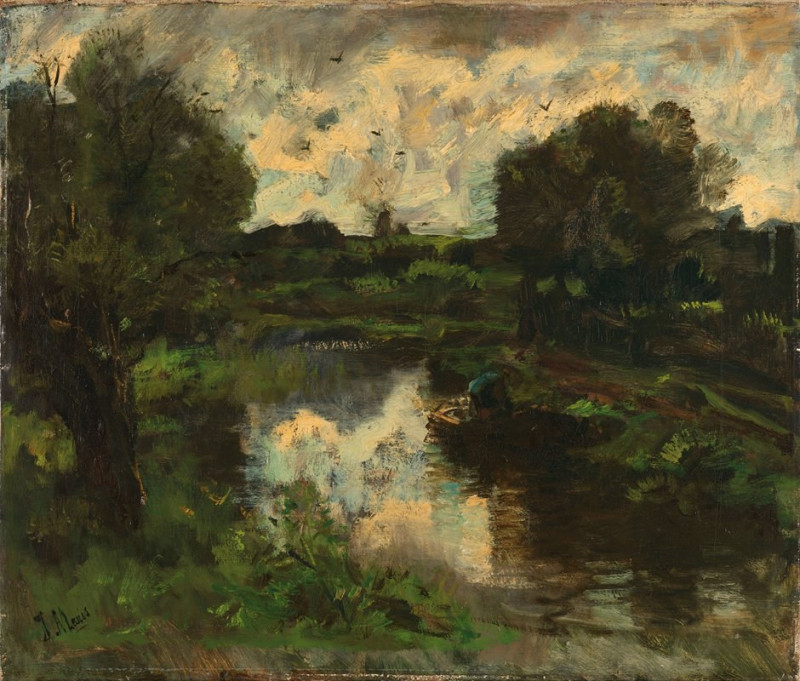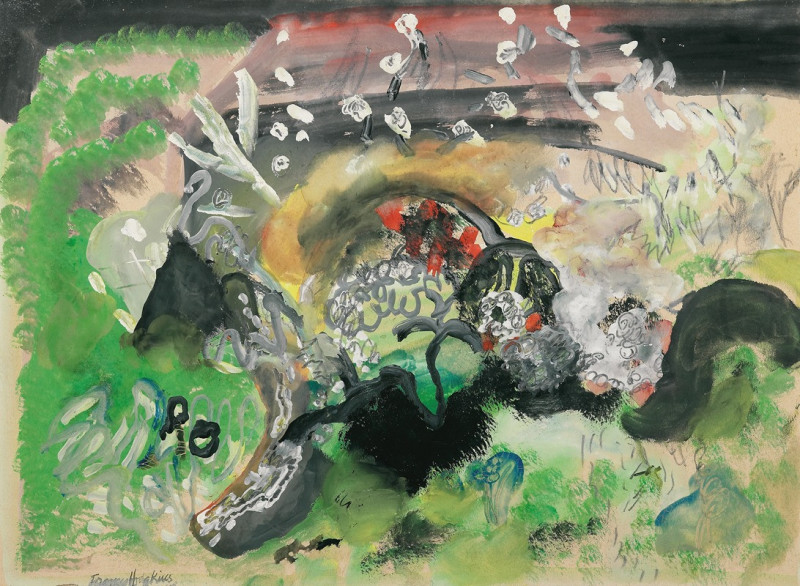Golden-Spangled Polish (1867)
Technique: Giclée quality print
Recommended by our customers
More about this artwork
Explore the exquisite detailing and vibrant colors of Harrison Weir's 1867 masterpiece, "Golden-Spangled Polish." This unique painting captures the splendor and eccentric beauty of the Polish breed of chickens, known for their striking appearance and ornate feather crowns.In "Golden-Spangled Polish," Weir portrays two birds in a natural setting, seemingly engaged in a moment of quiet interaction. The rooster, with its striking golden and black speckled plumage and a flamboyant, fiery crest, strikes a pose full of pride and vigor. Beside him, a hen with a deep, rich brown and subtly speckled body stands gracefully, her own lustrous black crest complementing her elegant stance.Weir's use of color and texture brings these characters to life, highlighting the glossy sheen of their feathers and the delicate variations in their coloration. Set against a backdrop of a lush green meadow under a soft sky, the painting not only celebrates the beauty of these birds but also evokes a sense of peace and simplicity.This artwork is not just a testament to Weir's skills as an illustrator but also a celebration of nature's diversity.
Delivery
Returns
Harrison William Weir (5 May 1824 – 3 January 1906), known as "The Father of the Cat Fancy", was a British artist.
He organised the first cat show in England, at the Crystal Palace, London, in July 1871. He and his brother, John Jenner Weir, both served as judges in the show. In 1887 Harrison Weir founded the National Cat Club and was its first President and Show Manager until his resignation in 1890.




